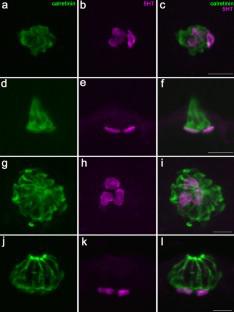Cell and Tissue Research ( IF 3.6 ) Pub Date : 2023-10-18 , DOI: 10.1007/s00441-023-03837-8 Takanori Ikenaga 1 , Tastufumi Nakamura 1 , Tatsushi Tajiri 1 , Minaki Tsuji 1 , Dai-Ichiro Kato 1 , Toshinao Ineno 2 , Yasuhisa Kobayashi 3, 4 , Naoaki Tsutsui 4, 5 , Sadao Kiyohara 1

|
A subset of gustatory cells are serotonin immunoreactive (ir) in the mammalian taste bud. In the taste bud of lamprey, elongated gustatory-like cells are also serotonin-ir. In contrast, flattened serotonin-ir cells are located only in the basal region of the taste buds in the teleosts and amphibians. These serotonin-ir cells are termed as basal cells. To evaluate the evolution and diversity of serotonergic cells in the taste bud of amniote animals, we explored the distribution and morphology of serotonin-ir cells in the taste buds of ancestral actinopterygian fish (spotted gar, sturgeon, Polypterus senegalus) and elasmobranch (stingray). In all examined animals, the taste buds contained serotonin-ir cells in their basal part. The number of serotonin-ir basal cells in each taste bud was different between these fish species. They were highest in the stingray and decreased in the order of the Polypterus, sturgeon, and gar. While serotonin immunoreactivity was observed only in the basal cells in the taste buds of the ancestral actinopterygian fish, some elongated cells were also serotonin-ir in addition to the basal cells in the stingray taste buds. mRNA of tryptophan hydroxylase 1 (tph1), a rate-limiting enzyme of the serotonin synthesis, is expressed in both the elongated and basal cells of stingray taste buds, indicating that these cells synthesize the serotonin by themselves. These results suggest that the serotonin-ir basal cells arose from the ancestor of the cartilaginous fish, and serotonin-ir cells in the elasmobranch taste bud exhibit an intermediate aspect between the lamprey and actinopterygian fish.
中文翻译:

软骨鱼和祖先放线鱼味蕾中血清素能细胞的多样性和进化
哺乳动物味蕾中的味觉细胞亚群具有血清素免疫反应性 (ir)。在七鳃鳗的味蕾中,细长的味觉样细胞也是血清素-ir。相比之下,扁平的血清素-ir细胞仅位于硬骨鱼和两栖动物味蕾的基底区域。这些血清素-ir细胞被称为基底细胞。为了评估羊膜动物味蕾中血清素能细胞的进化和多样性,我们探索了祖先放线鱼(斑点雀鳝、鲟鱼、塞内加尔多鳍鱼)和软骨鱼(黄貂鱼)味蕾中血清素-ir细胞的分布和形态。。在所有接受检查的动物中,味蕾的基部都含有血清素细胞。这些鱼种之间每个味蕾中血清素-ir基底细胞的数量是不同的。它们在黄貂鱼中最高,按多鳍鱼、鲟鱼和雀鳝的顺序依次减少。虽然仅在祖先放线鱼味蕾的基底细胞中观察到血清素免疫反应性,但除了黄貂鱼味蕾的基底细胞外,一些细长细胞也具有血清素-ir。色氨酸羟化酶 1 ( tph1 ) 是血清素合成的限速酶,它的 mRNA 在黄貂鱼味蕾的细长细胞和基底细胞中表达,表明这些细胞能够自行合成血清素。这些结果表明,血清素-ir基底细胞起源于软骨鱼的祖先,软骨鱼味蕾中的血清素-ir细胞表现出介于七鳃鳗和放线鱼之间的中间状态。



























 京公网安备 11010802027423号
京公网安备 11010802027423号